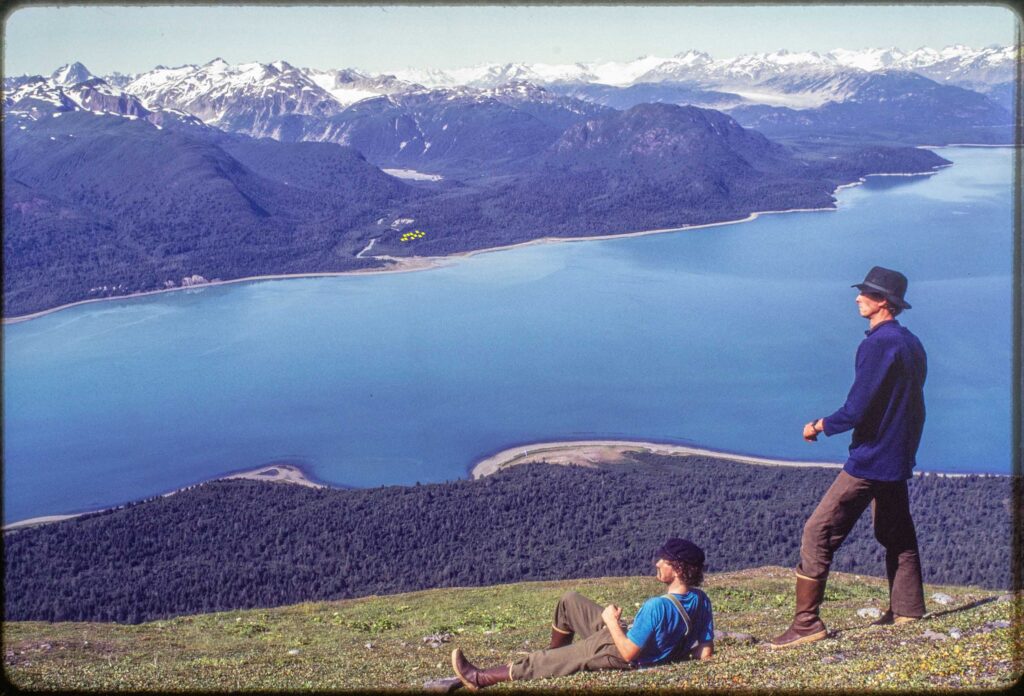William Herschel discovered infrared light in 1800 (Herschel 1800). R. W. Wood made the first outdoor infrared photograph in 1910 (Wood 1910). Robert Greenler was the first to publish an infrared photograph of a rainbow in 1971 (Greenler 1971). Vollmer and Shaw were the first to publish a pure infrared photograph of a 22° ice crystal halo (Figure 1, Volmer and Shaw 2017). All of these published findings involve near infrared (NIR) light, with wavelengths slightly longer than red light (i.e., not thermal infrared radiation).
Continue reading “Halo: Red vs. Blue”Eric Smith, Jamaican painter
After my junior year of high school, I spent the summer in Jamaica. I had been there before on family trips which were working vacations for my father. He was part of two Jamaican research projects on bioluminescence — of fireflies and marine dinoflagellates. Dad worked at Johns Hopkins with Bill McElroy who published his first paper on bioluminescence in 1942 (McElroy and Ballentine 1942) and in the 1950s described the luciferin-luciferase reaction (White et al. 1961) after studies of the 1.5 million fireflies collected by kids around Baltimore. Howard Seliger arrived at Hopkins in 1958 and quickly determined the spectral and quantum yield of firefly bioluminescence (Seliger and McElroy 1960) and eventually characterized the light emission from more than 100 species of firefly in Maryland and Jamaica.

Fun Factivities: Daytime Darkness
In 1992, Kellogg’s was collaborating with World Book to deliver educational content to kids on cereal boxes. In addition to its popular encyclopedia (still in print and updated every year), World Book produced Childcraft, a 15-volume set about everything interesting to kids. Childcraft produced the cereal box content.
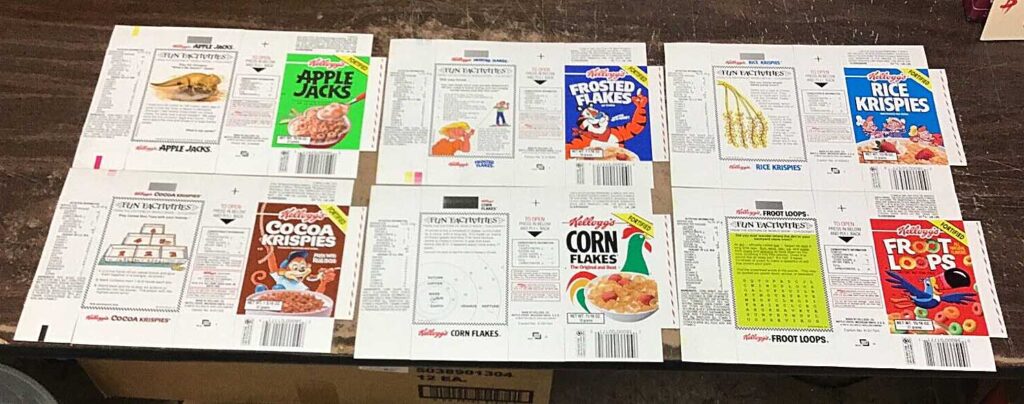
At the time, Kellogg’s Variety Packs included 10 (or sometimes 8?) single serving boxes of cereal. Each one had a Fun `Factivity’ on the back of the box (Figures 1 and 2). I don’t remember how I came across the box of Frosted Flakes below (Figure 3), but I still have it because I recognized the eclipse – the corona had the same shape as an eclipse I photographed 20 years earlier.
Continue reading “Fun Factivities: Daytime Darkness”Camera box
I am supposed to be curating my color slide collection so I can make thousands of digital copies that no one will ever see. I got distracted because I had to find my old slide sorting light tables and in the process also found a box with three old cameras. Two of these might have been in the family since the 1930s and the other was acquired more recently, although it is the oldest of the three.
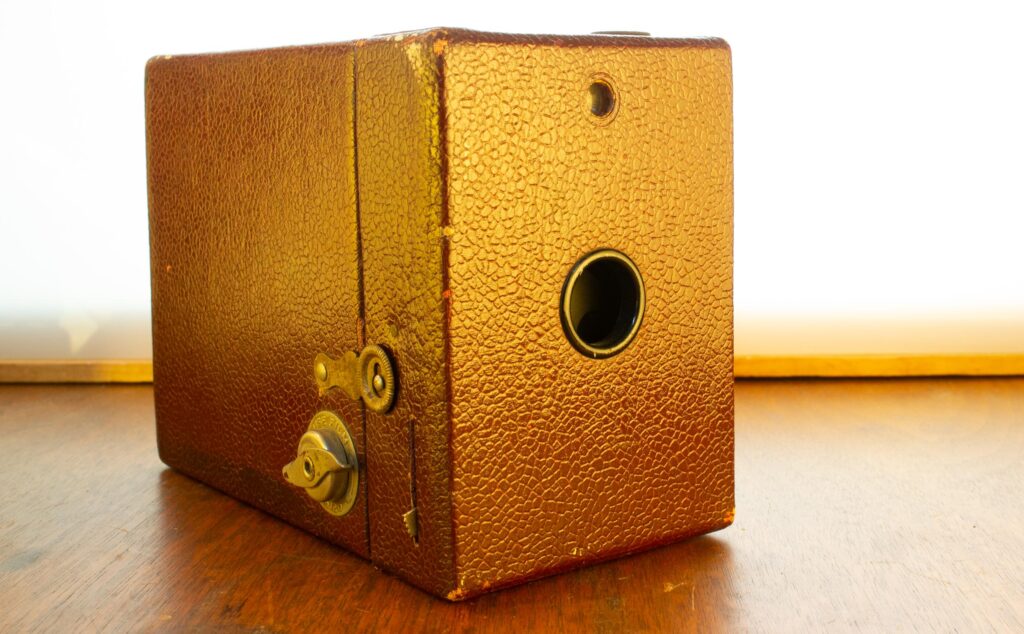
SliderPro 1000
About 10 years ago I started making digital copies of old film negatives and color slides. The scanners I had access to produced disappointing results, so I tried taking a closeup of the film with a digital camera (Figure 1). The camera was the first DSLR I owned. This made very good copies, capturing most of the information in the old film. My more recent experiences with consumer scanners and commercial scanning services suggest that it is easy to get much better results using a camera than with a slide/film scanner.
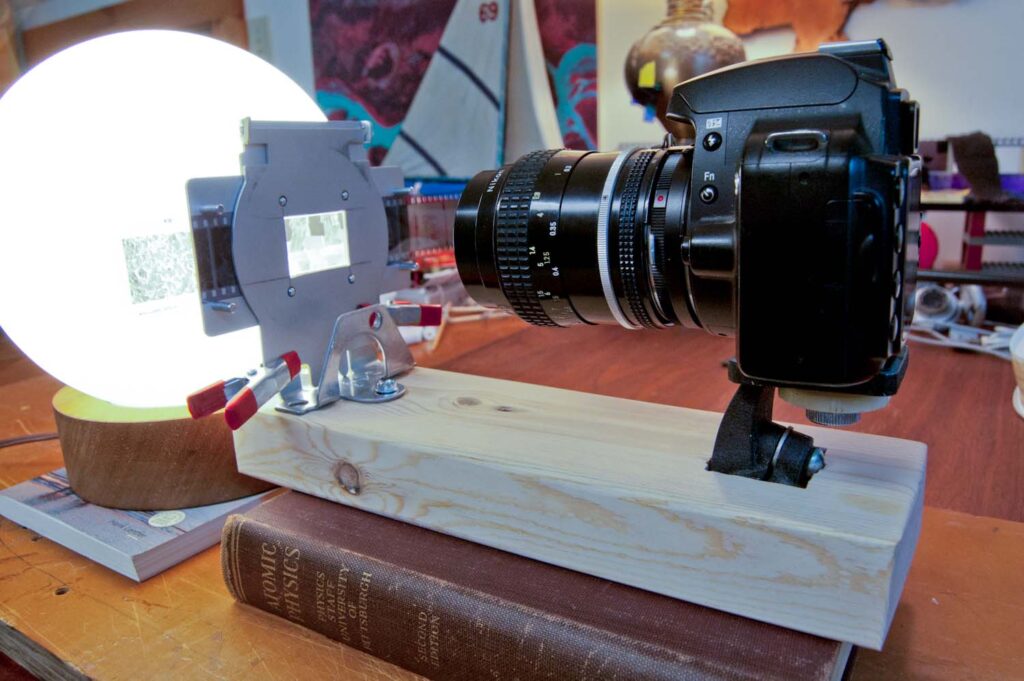
The flats and scarps of Lake Dunmore
The north end of Lake Dunmore is surrounded by 250 acres of flat, level land which is less than 25 feet higher than the lake. The soil is gravely sand, and lobes of sandy soil bulge into the lake at the Keewaydin and Songadeewin summer camps. I assumed these sandy lobes were deltas built into the lake as the Laurentide glacier melted away to the north, but now I’m not so sure.
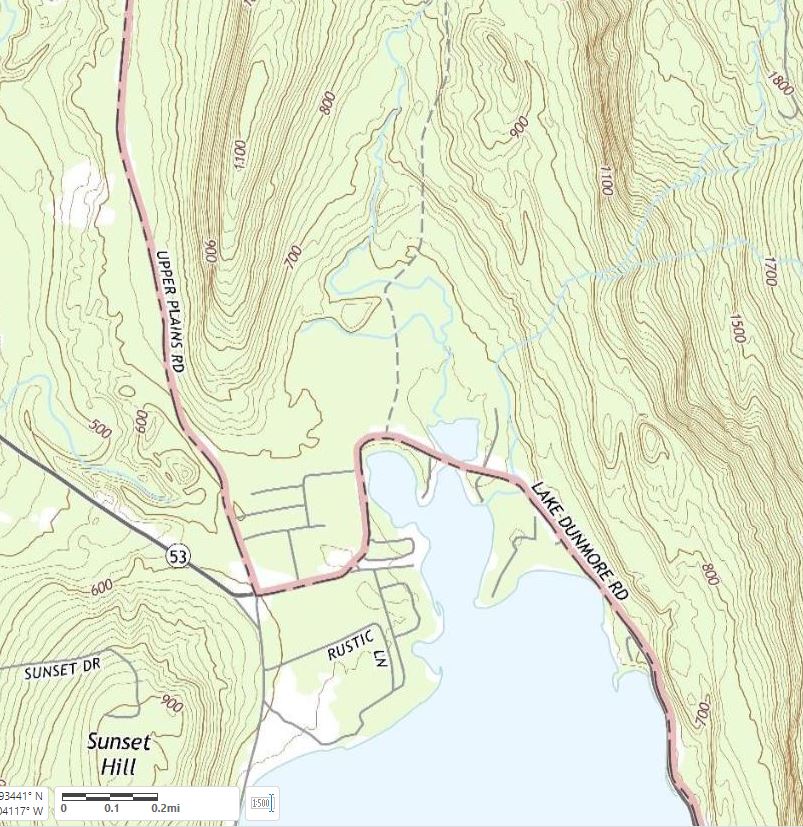
Plastic LiDAR
LiDAR datasets allow us to work with digital facsimiles of the earth surface and its adornments (e.g., vegetation). It’s also possible to transform the digital models back into physical form. I have been trying this with my 3D printer.
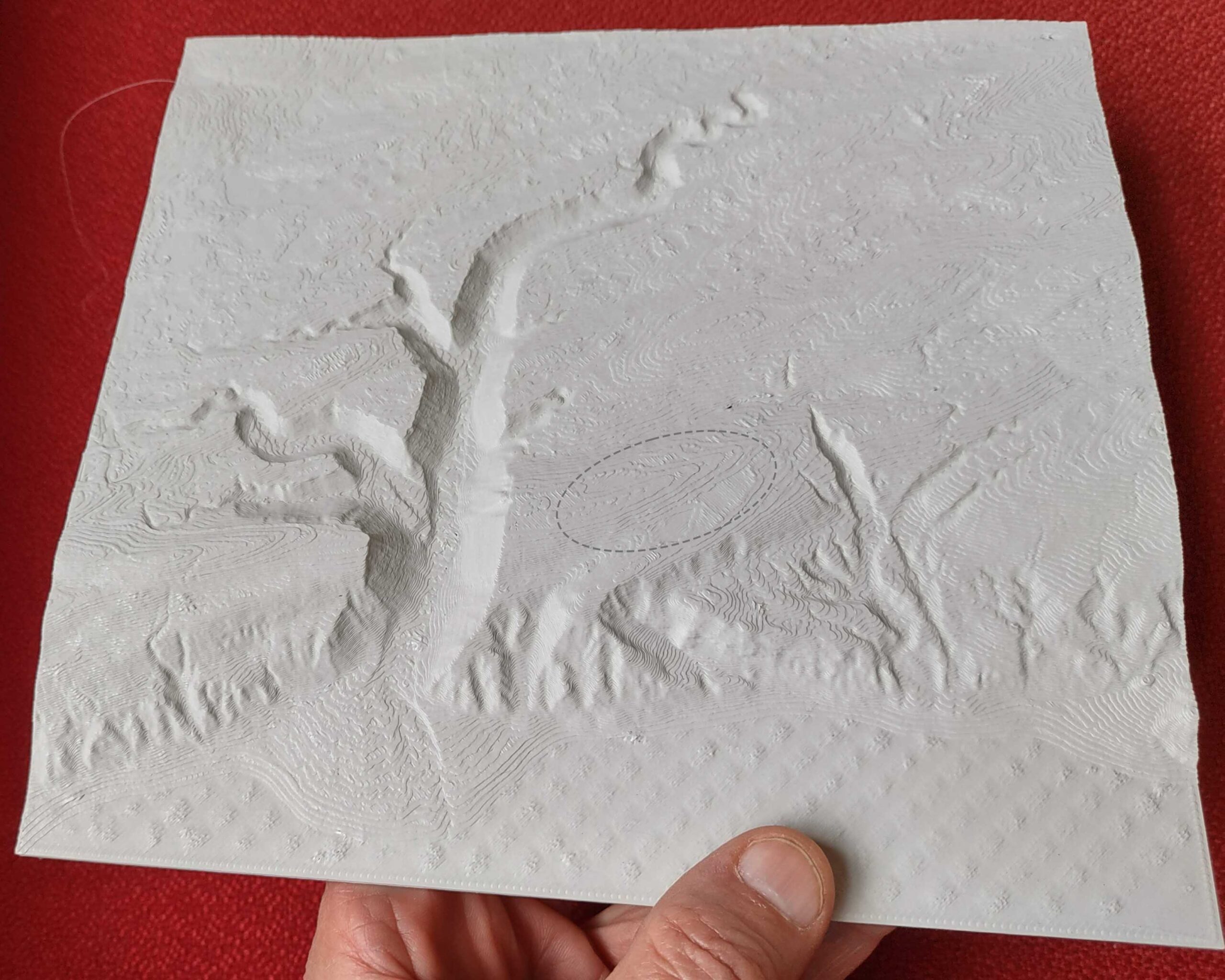
LiDAR canopies
The new LiDAR dataset for Glacier Bay includes not only the “bare earth” digital terrain model but also the point cloud which can represent vegetation and other things the airplane-borne LiDAR bounced off first before it bounced off the ground. This “first returns” cloud can show the shape of the upper vegetation canopy and even distinct understory strata. I have been trying to determine if any useful information can be quantified from the point cloud and to use QGIS to make colorful 3D images of the canopy models.
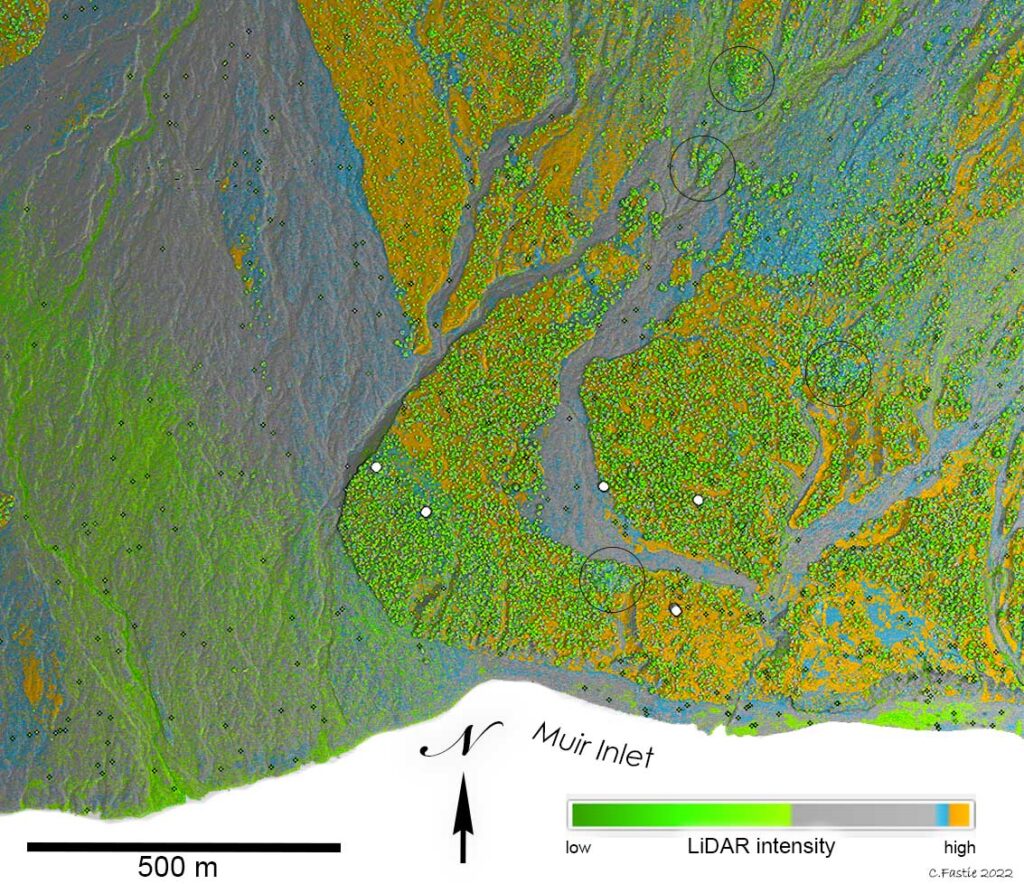
Bare Earth surface
In 2019 Glacier Bay National Park paid to have LIDAR mapping data collected for about a third of the park. Last summer the processed data were delivered and have now started to appear online for downloading. Most of the data are good quality (6.14 points/meter²) and the area around Park Headquarters and two areas of the outer coast (Pacific coast) are better quality (16.52 points/meter²).
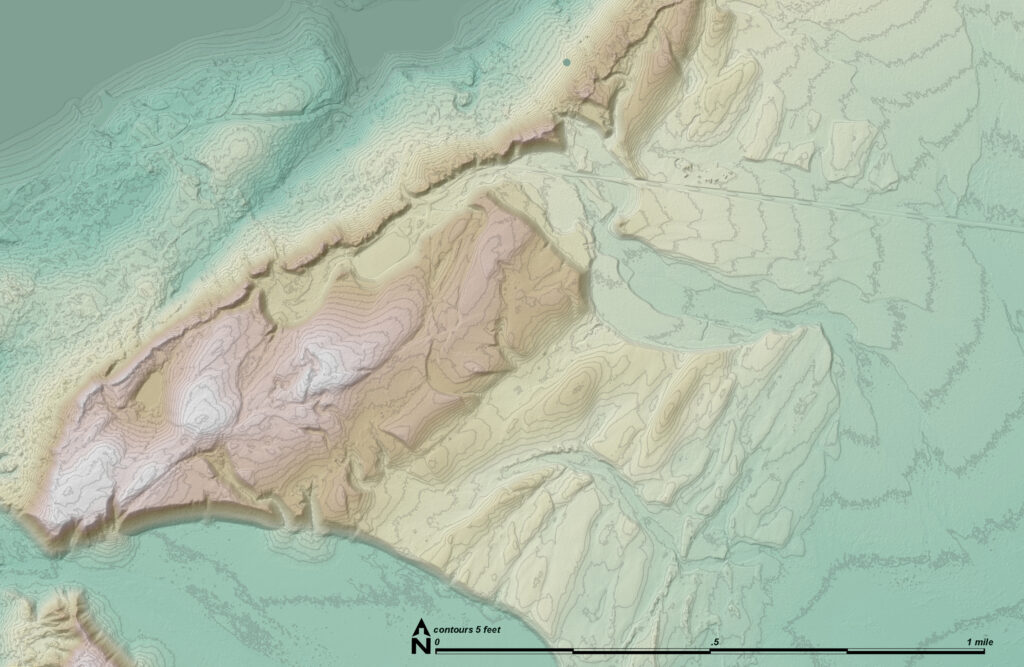
Have photo – will date
The Fred and Goose Cove study sites at Glacier Bay are only 4.2 km (2.7 miles) apart and the glacier exposed Goose Cove only about a decade earlier than Fred. The vegetation development at Goose Cove during the two decades after I established the plots (ca. 1990-2010) should be comparable to the most recent two decades of development at Fred (ca. 2000-2020). Precise comparisons require that I know how old the two sites are.
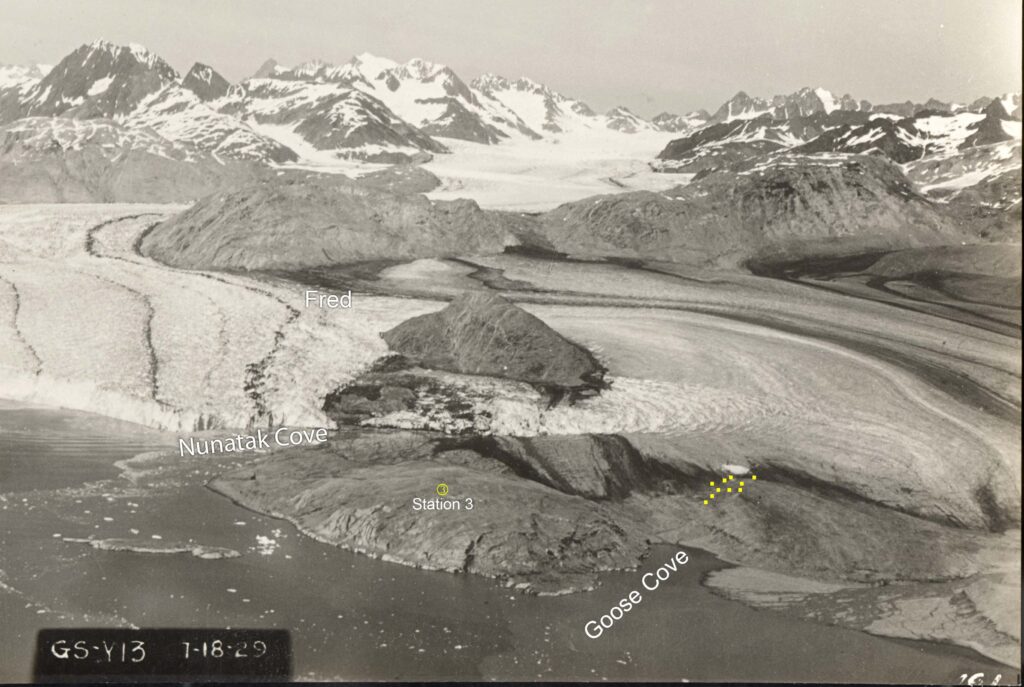
Dating Fred
The second youngest of my 10 study sites at Glacier Bay is called Fred because there is a USGS benchmark there named Fred. Fred is dominated by alder. When the plots were established in 1988, there were no spruce and the average diameter of the cottonwood trees was 7 cm (2.8 inches). There were about five of these little cottonwood trees in each plot and 280 alder stems. There are 10 plots and we measured the diameter of all 2800+ stems.
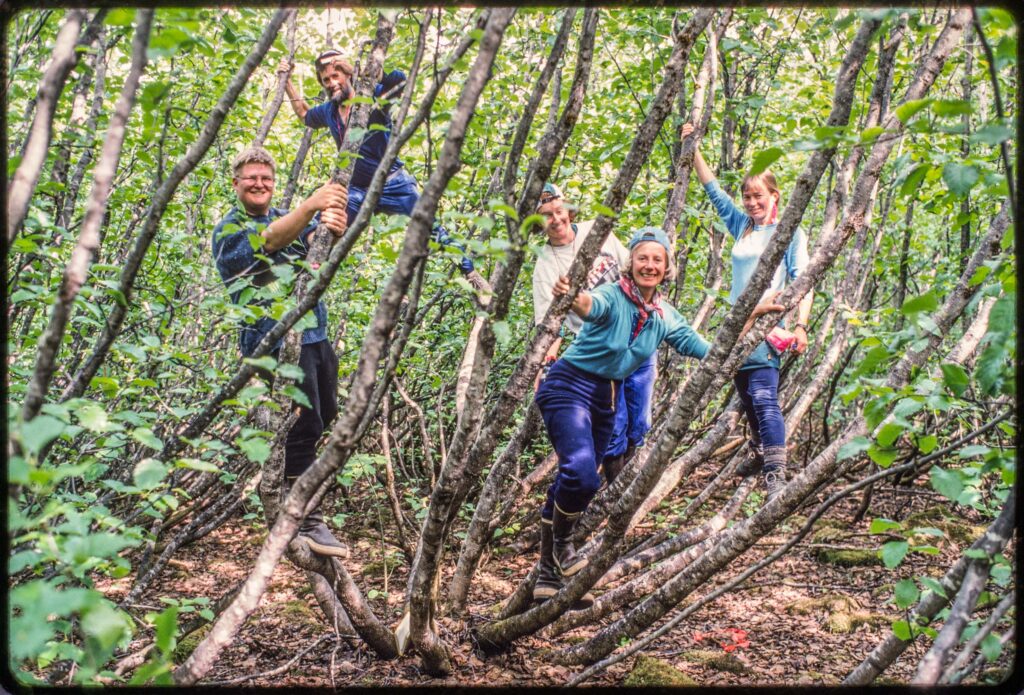
The primary source I used to date Fred’s emergence from under the glacier was an aerial photo taken in 1948. The McBride remnant, a large extent of shrinking, stagnant ice, was 550 m away from the plots and I guessed that four years earlier the ice had probably covered the plots. I was probably off by a few years.
Continue reading “Dating Fred”Dating retreat
Three decades ago I started monitoring vegetation change in Glacier Bay National Park where glaciers have been retreating and exposing new land to colonization by plants. Each of the 10 sites I study was exposed at a different date over the last 250 years and it’s important to know that date for each site. It seems even more important now that I have so much data from the sites.
